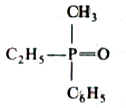Which one of the following complexes does not exhibit chirality?
[Cr(ox)3]3
cis-[PtCl2(en)]
cis-[RhCl2(NH3)4]+
mer−[Co(NO2)3(dien)]
The correct Answer is:C
To determine which of the following complexes does not exhibit chirality, we need to analyze the nature of the ligands involved and the structure of the complexes. Chirality in coordination compounds typically arises when a complex has a non-superimposable mirror image, which is often due to the presence of bidentate or polydentate ligands that can form rings with the central metal ion.
1. Understanding Chirality:
- Chirality occurs when a molecule cannot be superimposed on its mirror image. This is often due to the presence of chiral centers, which can be created by certain types of ligands (like bidentate or polydentate ligands) that form rings with the central metal ion.
2. Analyzing the Ligands:
- Identify the types of ligands in each complex. Bidentate ligands can form rings and are more likely to create chirality, while monodentate ligands cannot.
3. Option Analysis:
- Option 1: Oxalato (a bidentate ligand) forms a chiral ring. Therefore, this complex exhibits chirality.
- Option 2: Platinum complex with ethylene diamine (a bidentate ligand). This also forms a chiral ring and exhibits chirality.
- Option 3: A cis complex with two identical monodentate ligands (e.g., Cl). Since all ligands are monodentate, they do not form a chiral ring, and thus this complex does not exhibit chirality.
- Option 4: A meridional form of a complex with diethylene diamine (a tridentate ligand). This can form chiral rings and thus exhibits chirality.
4. Conclusion:
- After analyzing all options, it is clear that the third option, which consists of monodentate ligands, does not exhibit chirality.
Final Answer:
The complex that does not exhibit chirality is Option 3.
- Chirality occurs when a molecule cannot be superimposed on its mirror image. This is often due to the presence of chiral centers, which can be created by certain types of ligands (like bidentate or polydentate ligands) that form rings with the central metal ion.
- Identify the types of ligands in each complex. Bidentate ligands can form rings and are more likely to create chirality, while monodentate ligands cannot.
- Option 1: Oxalato (a bidentate ligand) forms a chiral ring. Therefore, this complex exhibits chirality.
- Option 2: Platinum complex with ethylene diamine (a bidentate ligand). This also forms a chiral ring and exhibits chirality.
- Option 3: A cis complex with two identical monodentate ligands (e.g., Cl). Since all ligands are monodentate, they do not form a chiral ring, and thus this complex does not exhibit chirality.
- Option 4: A meridional form of a complex with diethylene diamine (a tridentate ligand). This can form chiral rings and thus exhibits chirality.
- After analyzing all options, it is clear that the third option, which consists of monodentate ligands, does not exhibit chirality.
The complex that does not exhibit chirality is Option 3.
Topper's Solved these Questions
- CO-ORDINATION COMPOUNDSBOOK - VK JAISWAL ENGLISHCHAPTER - CO-ORDINATION COMPOUNDSEXERCISE - SUBJECTIVE PROBLEMS
42 Videos
- CHEMICAL BONDING (BASIC)BOOK - VK JAISWAL ENGLISHCHAPTER - CHEMICAL BONDING (BASIC)EXERCISE - SUBJECTIVE PROBLEMS
54 Videos
- d-BLOCK ELEMENTSBOOK - VK JAISWAL ENGLISHCHAPTER - d-BLOCK ELEMENTSEXERCISE - ASSERTION-REASON TYPE QUESTIONS
32 Videos
Similar Questions
Knowledge Check
Which one of the following is chiral ?
A1, 1-Dibromo-1-chloropropaneB1,3-Dibromo-1-chloropropaneC1, 1-Dibromo-3-chloropropaneD1, 3-Dibromo-2-chloropropaneWhich of the following cells does not exhibit phagocytic activity ?
AMonocytesBNeutrophilCBasophilDMacrophageWhich of the following is chiral?
A B
B C
C D
D
Which one of the following sperical lenses does not exhibit dispersion? The radii of curvature of the surfaces of the lenses are as given in the diagrams.
R1≠R2
View SolutionWhich one of the following complex is not expected to exhibit isomerism
View SolutionWhich of the following cells does not exhibit phagocytic activity ?
View SolutionWhich of the following cells does not exhibit phagocytic activity ?
View SolutionWhich of the following cells does not exhibit phagocytic activity ?
View Solution
